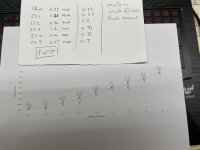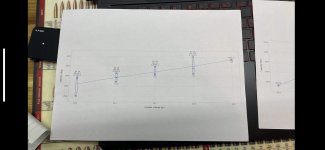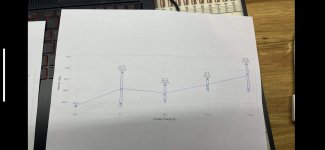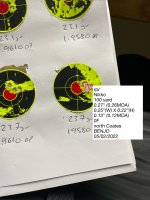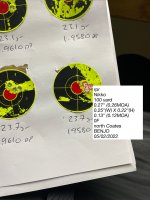Hi bit of background,I’ve been shooting and reloading a while and based in Sheffield uk.
In late December I chopped my finger off and after surgery which was a great success,I was stuck home for 3 months.during this time I started watching YouTube reloading vids.
Eric cortina
F class John, and many others.being bored I started buying better equipment to cheer myself up lol
Area 419 press,amp annealer,Redding dies,21st century gauge,magneto speed v3 the list goes on hahaha
£6000 later and I’ve got a top end setup.
So here’s where I need help with my .223 load for my RPR 1/7 twist
Lapua brass.VV N140,Berger 77gr,cci primer
First graph is 3 shot string .3 gr increments
Graphs 2&3 are the nodes I found below and above working in 3 strings .1gr increments
I’m new to chrono and graph analysis so what’s your thoughts from experience which looks like the best powder node?
Thanks in advance
In late December I chopped my finger off and after surgery which was a great success,I was stuck home for 3 months.during this time I started watching YouTube reloading vids.
Eric cortina
F class John, and many others.being bored I started buying better equipment to cheer myself up lol
Area 419 press,amp annealer,Redding dies,21st century gauge,magneto speed v3 the list goes on hahaha
£6000 later and I’ve got a top end setup.
So here’s where I need help with my .223 load for my RPR 1/7 twist
Lapua brass.VV N140,Berger 77gr,cci primer
First graph is 3 shot string .3 gr increments
Graphs 2&3 are the nodes I found below and above working in 3 strings .1gr increments
I’m new to chrono and graph analysis so what’s your thoughts from experience which looks like the best powder node?
Thanks in advance

